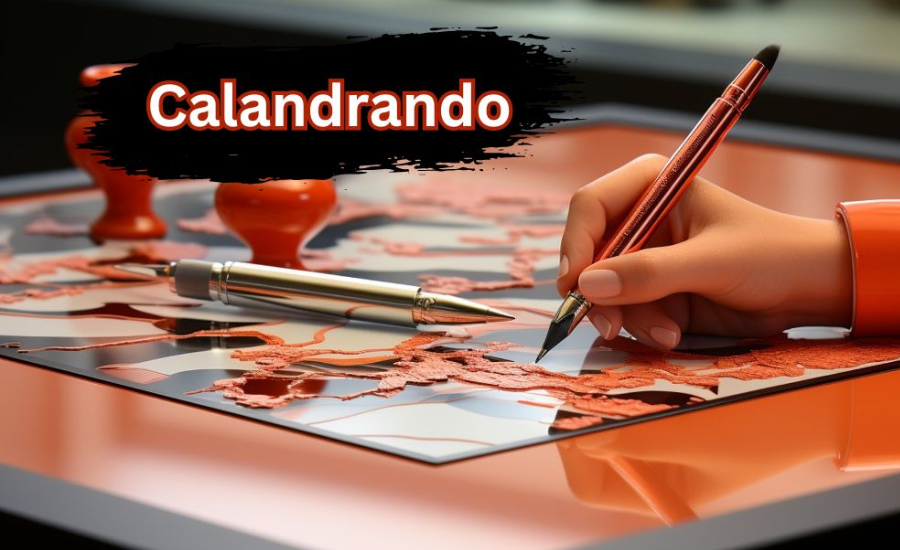Introduction
Sicilian Calandrando stands out as a quintessential dish within the rich tapestry of Sicilian cuisine, renowned for its complex flavors and hearty texture. This traditional seafood stew, rooted deeply in Sicilian culinary traditions, marries fresh seafood, aromatic herbs, and ripe tomatoes into a single, flavorful dish that embodies the essence of Sicily. For those passionate about delving into Sicilian cooking, mastering the preparation of Calandrando involves a comprehensive understanding of several key culinary techniques. This guide aims to explore these essential methods, offering detailed insights into how they contribute to crafting an exceptional Calandrando.
The Foundations of Culinary Mastery
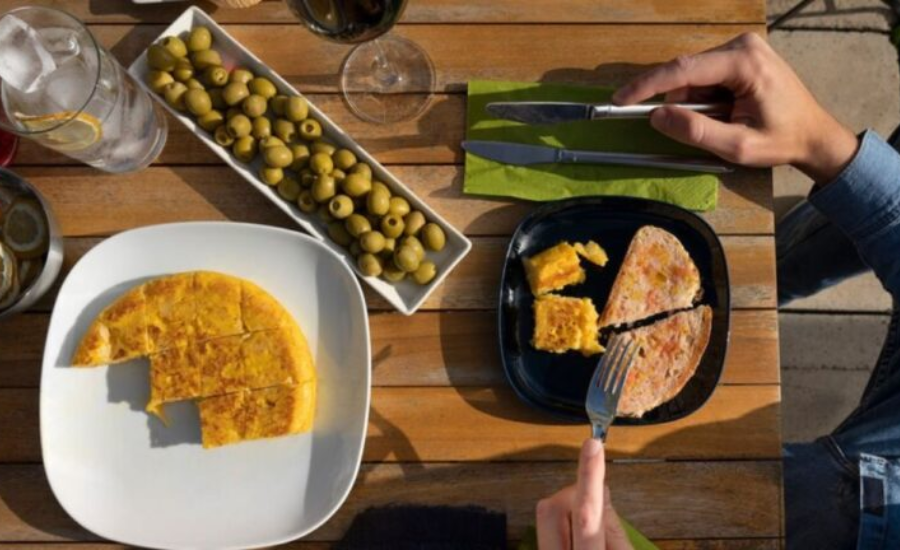
Achieving culinary excellence requires not only understanding ingredients but also mastering fundamental techniques that elevate ordinary elements into extraordinary dishes. Below, we delve into key skills and methods crucial for creating an exceptional Sicilian Calandrando, starting with basic knife skills and progressing through advanced techniques like sous vide cooking and emulsification.
Knife Skills: The Essential Foundation
Knife skills form the bedrock of efficient and precise food preparation. Mastery in this area enhances the presentation and ensures accuracy in cutting, which is vital for uniform cooking and optimal flavor development.
1. Proper Knife Grip
A proper knife grip is fundamental for control and stability. Hold the handle with your three fingers wrapped around it while your thumb and forefinger grasp the blade. This grip provides the necessary control for precise cutting and reduces the risk of accidents. A well-maintained grip allows you to maneuver the knife effectively, whether you’re dicing vegetables or slicing delicate herbs.
2. Essential Cutting Techniques
- Chopping: This technique involves making quick, forceful cuts, ideal for preparing vegetables and herbs. Chopping requires less precision but is crucial for achieving uniform pieces that cook evenly. For Calandrando, this technique ensures that vegetables are cut into sizes that will cook at the same rate, providing a consistent texture throughout the stew.
- Dicing: Dicing involves cutting ingredients into uniform cubes. This technique is important for achieving consistent cooking results and is often used in dishes where uniformity is key. In Calandrando, dicing vegetables like onions and bell peppers ensures that they cook evenly and integrate well with the seafood.
- Julienne: Julienne cuts create thin, matchstick-like slices, perfect for garnishes and stir-fries. This technique adds texture and visual appeal to dishes. While not always necessary for Calandrando, julienned vegetables can be used for garnishing or adding a crunchy texture.
- Brunoise: Brunoise is a fine dice used for sauces and soups. This technique requires precise cutting and is essential for creating smooth, well-textured sauces. For Calandrando, brunoise cuts can be used for finely chopping ingredients like garlic, which dissolve into the stew, providing a depth of flavor.
3. Knife Maintenance
A sharp knife is both safer and more effective than a dull one. Regular honing and periodic sharpening are essential for maintaining the knife’s edge. Honing realigns the blade, while sharpening restores its sharpness. Keeping knives well-maintained ensures clean cuts and reduces the risk of injuries. For Calandrando preparation, a sharp knife is crucial for efficiently handling seafood and vegetables, leading to better texture and presentation.
The Art of Sautéing: Building Flavor and Texture

Sautéing involves cooking food quickly over high heat with a small amount of fat, which is crucial for developing complex flavors and achieving the desired texture.
1. Choosing the Right Pan
A heavy-bottomed skillet or sauté pan is ideal for sautéing. These pans distribute heat evenly, preventing hot spots and ensuring consistent cooking. Even heat distribution is crucial for achieving the perfect sear on seafood and vegetables, which contributes to the overall flavor and texture of Calandrando.
2. Controlling Heat
Preheating the pan is essential for effective sautéing. Adding food to a hot pan creates a sear that locks in juices and enhances flavor. Maintaining the right temperature is crucial to avoid burning and ensure even cooking. Adjust the heat as needed to control the cooking process. For Calandrando, a properly heated pan ensures that the seafood and vegetables are sautéed to perfection, developing rich, caramelized flavors.
3. The Sautéing Process
- Fat Selection: Choose fats with high smoke points, such as clarified butter or vegetable oil. High smoke points prevent the fat from burning and ensure a clean, flavorful cook. In Calandrando, the choice of fat can influence the final flavor profile of the dish, so selecting a high-quality fat is essential.
- Timing: Introduce ingredients in stages based on their cooking times. Start with aromatics like onions and garlic to develop a base flavor, add proteins to build richness, and finish with vegetables for texture and color. For Calandrando, layering the ingredients in this manner ensures that each component is cooked to the right texture and contributes to a balanced, flavorful stew.
The Maillard Reaction: The Science of Browning
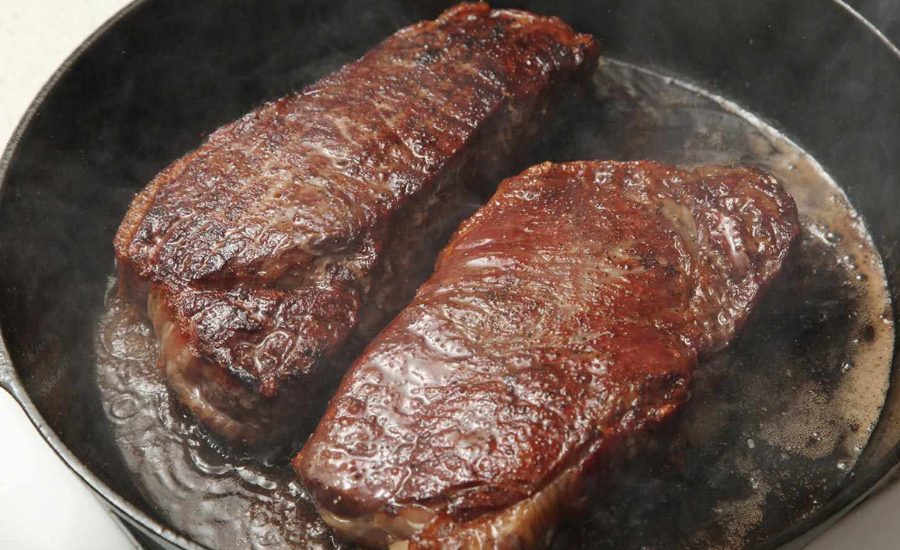
The Maillard reaction is a chemical process that occurs when proteins and sugars in food are exposed to heat, resulting in browning and the development of complex flavors.
1. Optimal Conditions for Browning
- Dry Surface: Pat ingredients dry before cooking to enhance browning. Moisture can inhibit the Maillard reaction and lead to steaming rather than searing. Ensuring that the seafood and vegetables in Calandrando are dry before sautéing will help achieve a beautiful, caramelized exterior.
- High Heat: Use high temperatures to initiate the Maillard reaction quickly. High heat accelerates the browning process and develops deeper flavors. For Calandrando, this means using a hot pan to sear the seafood and vegetables, contributing to the overall richness of the dish.
- Minimal Crowding: Avoid overcrowding the pan to maintain high temperatures. Overcrowding traps moisture and prevents proper browning. When cooking Calandrando, ensure that the pan is not overcrowded to allow each ingredient to brown properly and develop a rich, flavorful crust.
2. Practical Applications
- Searing Meat: Achieve a flavorful crust on meat while keeping the interior tender. Searing locks in juices and adds a rich, caramelized layer of flavor. In Calandrando, searing the seafood before adding it to the stew enhances its flavor and texture.
- Toasting Bread: Toasting develops rich flavors and a satisfying crunch. The Maillard reaction enhances the complexity of flavor in bread. While not a primary component of Calandrando, toasted bread can be served alongside the stew for added texture.
- Roasting Vegetables: Roasting intensifies the natural sweetness of vegetables and adds depth to their flavor profile. Roasting some vegetables before adding them to Calandrando can enhance their flavor and contribute to the dish’s overall richness.
Sous Vide Cooking: Precision and Consistency

Sous vide, a French term meaning “under vacuum,” involves cooking food in a vacuum-sealed bag at a precise, low temperature in a water bath. This technique ensures perfect doneness and retains nutrients.
1. Required Equipment
- Sous Vide Immersion Circulator: This device controls the water temperature with high precision, ensuring consistent results. For Calandrando, using sous vide can be beneficial for cooking seafood to the perfect level of doneness without overcooking.
- Vacuum Sealer: Removes air from the bag, preventing oxidation and ensuring even cooking. Vacuum-sealing seafood and vegetables before cooking can help retain their natural flavors and textures.
- Water Bath Container: Holds water and maintains temperature stability throughout the cooking process. A large enough container is essential for sous vide cooking, allowing for consistent temperature control.
2. The Sous Vide Cooking Process
- Seasoning: Season food before sealing to infuse flavors deeply into the ingredients. Proper seasoning enhances the overall taste of the dish. For Calandrando, seasoning seafood and vegetables before sous vide cooking will ensure that the flavors are well-integrated.
- Sealing: Use the vacuum sealer to remove air and seal the bag. Proper sealing ensures that food cooks evenly and retains its moisture. For Calandrando, sealing the seafood and vegetables helps maintain their texture and flavor during cooking.
- Temperature and Time: Set the immersion circulator to the desired temperature (e.g., 130°F for a medium-rare steak) and cook for the recommended time. Sous vide cooking times are often longer than traditional methods but ensure precise doneness. For Calandrando, adjust the temperature and time based on the type of seafood being used to achieve optimal results.
3. Finishing Touches
After sous vide cooking, briefly sear the food in a hot pan to develop a crust and enhance flavor. This final step adds texture and additional layers of flavor without overcooking the interior. For Calandrando, a quick sear of the seafood after sous vide cooking can add a delightful texture and flavor contrast.
Emulsification: Crafting Perfect Blends
Emulsification is the process of combining two immiscible liquids, such as oil and water, into a stable mixture. This technique is essential for creating smooth sauces and dressings.
1. Types of Emulsions
- Temporary Emulsions: These include vinaigrettes that separate quickly and need mixing before use. They are easier to prepare but require frequent agitation. While not a primary component of Calandrando, a temporary emulsion can be used in a salad served alongside the dish.
- Permanent Emulsions: These are stable mixtures like mayonnaise and hollandaise sauce. They remain mixed without separation due to the emulsifying agents. A permanent emulsion could be used to create a complementary sauce or dressing for Calandrando.
2. Key Components
- Emulsifying Agents: Ingredients such as egg yolks or mustard help stabilize the mixture and prevent separation. Emulsifiers create a uniform blend of oil and water. In Calandrando, using an emulsifying agent can help create a smooth, consistent sauce if desired.
- Gradual Mixing: Slowly add oil to the water phase while whisking vigorously. This gradual incorporation helps create a stable emulsion and prevents breaking. For Calandrando, incorporating emulsified sauces or dressings can enhance the dish’s flavor profile.
Baking: The Art and Science of Pastries
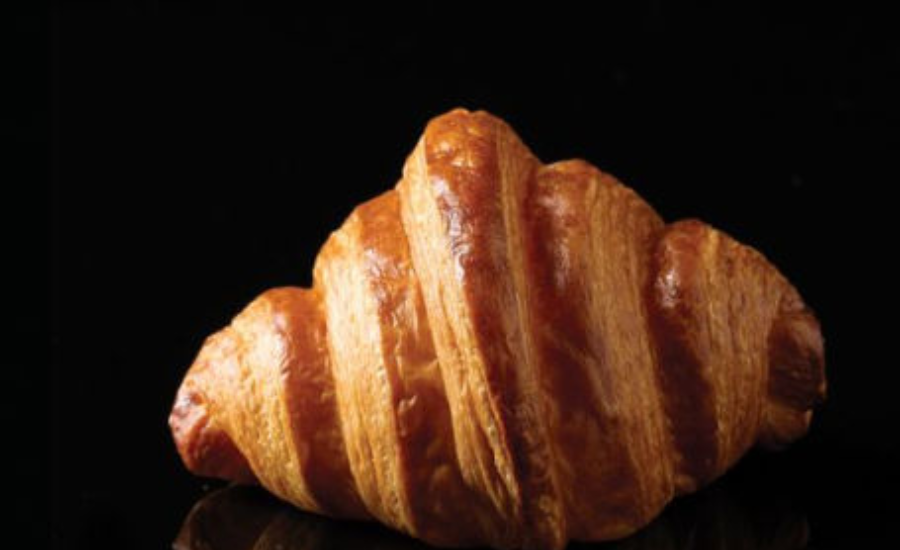
Baking is a precise science requiring exact measurements and controlled conditions to produce perfect results. It involves both artistic and technical skills.
1. Understanding Ingredients
- Flour: Provides structure to baked goods through gluten formation. Different types of flour impact texture and consistency. For Calandrando, while not a primary ingredient, understanding flour types can be useful for creating accompanying baked goods.
- Leavening Agents: Baking powder, baking soda, and yeast cause dough to rise. They are crucial for creating light and airy textures. For pastries served alongside Calandrando, selecting the appropriate leavening agents ensures the desired texture.
- Fat: Adds richness and tenderness to baked goods. It contributes to the overall mouthfeel and flavor. Choosing the right fat for baking ensures a desirable texture in pastries.
- Sugar: Sweetens and aids in browning. Sugar also impacts texture and moisture content. For baked goods accompanying Calandrando, sugar levels should be adjusted to balance sweetness and texture.
2. Mixing Methods
- Creaming: Beating butter and sugar together incorporates air, creating a light and fluffy texture. This method is often used for cookies and cakes. Understanding creaming techniques helps in preparing pastries to complement Calandrando.
- Folding: Gently combining ingredients to retain air and volume. This technique is essential for delicate items like soufflés and meringues. For light, airy pastries, mastering folding techniques is crucial.
3. Temperature Control
- Preheating: Ensures the oven reaches the correct temperature for even baking. Preheating is crucial for consistent results. For pastries, proper preheating ensures that baked goods cook evenly and achieve the desired texture.
- Monitoring: Use an oven thermometer for accurate temperature readings and check doneness with a toothpick or cake tester. Proper monitoring prevents undercooking or overcooking. This is essential for creating perfect pastries to serve alongside Calandrando.
Fermentation: Enhancing Flavor and Nutrition

Fermentation uses natural microorganisms to develop complex flavors, textures, and nutritional benefits in food. This process is fundamental in many traditional dishes.
1. Bread Fermentation
- Yeast and Sourdough Starters: Yeast ferments sugars, producing carbon dioxide and alcohol that leaven bread. Sourdough starters contribute unique flavors and textures. For Calandrando, freshly baked bread with a fermented flavor can complement the dish beautifully.
- Proofing: Allowing dough to rise, which develops flavor and texture. Proofing is a crucial step in achieving the desired bread structure. Proper proofing ensures that the bread served with Calandrando has a light, airy texture.
2. Fermented Foods
- Yogurt: Bacteria ferment lactose, creating tangy flavors and a creamy texture. Yogurt is a staple in many cuisines and provides beneficial probiotics. While not a primary ingredient in Calandrando, yogurt can be used in sauces or dressings served alongside.
- Kimchi and Sauerkraut: Lactic acid fermentation preserves vegetables and enhances their flavors. These fermented foods are rich in probiotics and add depth to meals. They can be served as accompaniments to Calandrando for added flavor and nutritional benefits.
3. Benefits of Fermentation
- Nutritional Enhancements: Increases the bioavailability of nutrients, making them easier to absorb. Fermented foods often have higher nutrient profiles, which can complement the nutritional value of Calandrando.
- Preservation: Extends shelf life naturally through the development of acids and other compounds. Fermented foods can be used to create preserves or accompaniments that enhance the dining experience.
- Flavor Development: Creates unique, rich taste profiles that enhance the overall dining experience. The complexity of flavors in fermented foods can add a new dimension to the Calandrando meal.
Additional Tips for Perfecting Sicilian Calandrando
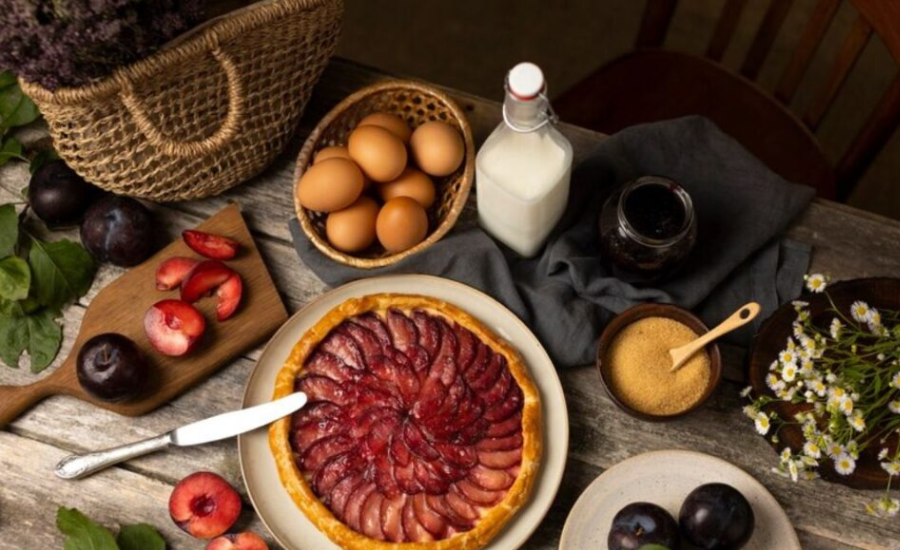
1. Selecting Fresh, Seasonal Seafood
The quality of seafood significantly impacts the flavor of Calandrando. For the best results, choose fresh, seasonal seafood from a reputable fish market. Fresh ingredients are essential for achieving an authentic taste and ensuring that the seafood is tender and flavorful.
2. Using High-Quality Olive Oil
Investing in high-quality olive oil is crucial for enhancing the flavor of your Calandrando. Olive oil adds richness and depth, making the dish more authentic and delicious. The quality of olive oil can influence the overall flavor profile of the stew, so select a premium product for the best results.
3. Adjusting Liquid Levels
If additional liquid is needed, consider adding seafood broth or water. However, be cautious not to overdo it, as you want to maintain a thick, stew-like consistency. Balancing the liquid levels ensures that the dish has the right texture and prevents it from becoming too watery or too thick.
4. Experimenting with Variations
Feel free to experiment with adding white wine or different types of fish to your Calandrando. These variations can introduce new flavors and make the dish uniquely your own. Customizing the recipe allows you to explore different flavor profiles and ingredients, creating a Calandrando that reflects your personal tastes.
Facts:
- Sicilian Calandrando: A traditional Sicilian seafood stew that combines fresh seafood, aromatic herbs, and ripe tomatoes, known for its complex flavors and hearty texture.
- Knife Skills:
- Proper Grip: Hold the knife with three fingers around the handle and thumb and forefinger gripping the blade for control.
- Techniques: Chopping, dicing, julienne, and brunoise are essential for uniform cooking and optimal flavor development.
- Maintenance: Regular honing and sharpening ensure a sharp and effective knife.
- Sautéing:
- Pan Selection: Use a heavy-bottomed skillet or sauté pan for even heat distribution.
- Heat Control: Preheat the pan and adjust heat to avoid burning and ensure even cooking.
- Fat Selection: Choose fats with high smoke points like clarified butter or vegetable oil.
- Maillard Reaction: The chemical process of browning that develops complex flavors; requires a dry surface, high heat, and minimal crowding.
- Sous Vide Cooking:
- Equipment: Includes an immersion circulator, vacuum sealer, and water bath container.
- Process: Involves seasoning, sealing, cooking at precise temperatures, and finishing with a quick sear.
- Emulsification:
- Types: Temporary (like vinaigrettes) and permanent (like mayonnaise).
- Components: Emulsifying agents like egg yolks or mustard stabilize mixtures.
- Baking:
- Ingredients: Flour, leavening agents, fat, and sugar are essential.
- Methods: Creaming, folding, and temperature control are crucial for successful baking.
- Fermentation:
- Types: Includes bread fermentation with yeast and sourdough, and fermented foods like yogurt, kimchi, and sauerkraut.
- Benefits: Enhances flavor, nutrition, and preservation.
FAQs:
Q: What is Sicilian Calandrando?
A: Sicilian Calandrando is a seafood stew that integrates fresh seafood, tomatoes, and herbs into a rich and flavorful dish.
Q: Why are knife skills important in cooking Calandrando?
A: Knife skills ensure precise cuts for even cooking and better texture, enhancing the overall flavor and presentation of the dish.
Q: What role does sautéing play in making Calandrando?
A: Sautéing develops complex flavors and achieves desired textures by cooking ingredients quickly over high heat.
Q: How does the Maillard reaction affect Calandrando?
A: The Maillard reaction creates a rich, caramelized flavor on seafood and vegetables, enhancing the dish’s overall depth and taste.
Q: What is sous vide cooking and how is it used in Calandrando?
A: Sous vide involves cooking food in a vacuum-sealed bag at a precise temperature, which ensures perfect doneness and preserves flavors and textures in Calandrando.
Q: What is emulsification and how does it relate to Calandrando?
A: Emulsification combines immiscible liquids like oil and water into a stable mixture. It can be used for sauces or dressings that complement Calandrando.
Q: Why is fermentation important for dishes accompanying Calandrando?
A: Fermentation enhances flavors and nutritional benefits. Fermented foods and freshly baked bread can complement Calandrando, adding complexity and richness.
Conclusion
Sicilian Calandrando is a culinary masterpiece that embodies the rich traditions of Sicilian cuisine. By mastering techniques such as knife skills, sautéing, the Maillard reaction, sous vide cooking, emulsification, baking, and fermentation, you can create a dish that truly captures the essence of Sicily. Fresh ingredients, a thorough understanding of these techniques, and a touch of creativity will elevate your Calandrando, making it a memorable and flavorful experience. Embrace these techniques, experiment with variations, and enjoy the process of preparing a dish that celebrates the heart and soul of Sicilian cooking.
Read More: Hints
